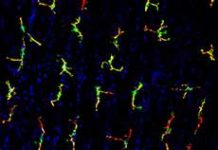On 18 December 2020, the US Food and Drug Administration (FDA) approved osimertinib (TAGRISSO, AstraZeneca Pharmaceuticals LP) for adjuvant therapy after tumour resection in patients with non-small cell lung cancer (NSCLC) whose tumours have epidermal growth factor receptor (EGFR) exon 19 deletions or exon 21 L858R mutations, as detected by an FDA-approved test.
Efficacy was demonstrated in a randomised, double-blind, placebo-controlled study (ADAURA, NCT02511106) in patients with EGFR exon 19 deletions or exon 21 L858R mutation-positive NSCLC who had complete tumour resection, with or without prior adjuvant chemotherapy. Eligible patients with resectable tumours (stage IB – IIIA) were required to have predominantly non-squamous histology and EGFR exon 19 deletions or exon 21 L858R mutations identified prospectively from tumour tissue in a central laboratory by the cobas® EGFR Mutation Test. A total of 682 patients were randomised (1:1) to receive osimertinib 80 mg orally once daily or placebo following recovery from surgery and standard adjuvant chemotherapy, if given.
The major efficacy outcome measure was disease-free survival (DFS) in patients with stage II – IIIA NSCLC determined by investigator assessment. Median DFS was not reached (38.8, Non Estimable [NE]) in patients on the osimertinib arm compared with 19.6 months (16.6, 24.5) on the placebo arm (hazard ratio [HR] 0.17, 95% confidence interval [CI] 0.12, 0.23; p < 0.0001). DFS in the overall study population was a secondary efficacy outcome measure; the median was not reached (NE, NE) in patients on the osimertinib arm compared with 27.5 months (22, 36) on the placebo arm (HR 0.20, 95% CI 0.15, 0.27; p < 0.0001).
The recommended osimertinib dose for adjuvant treatment of early stage NSCLC is 80 mg orally once daily, with or without food, until disease recurrence, or unacceptable toxicity, or for up to 3 years.
Most common (>20%) adverse reactions in patients taking osimertinib, including laboratory abnormalities, were lymphopenia, leukopenia, thrombocytopenia, diarrhoea, anaemia, rash, musculoskeletal pain, nail toxicity, neutropenia, dry skin, stomatitis, fatigue, and cough.
Full prescribing information for TAGRISSO is available here.
This review was conducted under Project Orbis, an initiative of the FDA Oncology Center of Excellence (OCE). Project Orbis provides a framework for concurrent submission and review of oncology drugs among international partners. For this review, FDA collaborated with the Australian Therapeutic Goods Administration (TGA), the Brazilian Health Regulatory Agency (ANVISA), Health Canada, Singapore’s Health Sciences Authority, and Switzerland’s Swissmedic. The application reviews are ongoing at the other regulatory agencies.
This review used the Real-Time Oncology Review pilot programme, which streamlined data submission prior to the filing of the entire clinical application, and the Assessment Aid, a voluntary submission from the applicant to facilitate the FDA’s assessment. The FDA approved this application two months ahead of the FDA goal date.
This application was granted breakthrough designation.
Healthcare professionals should report all serious adverse events suspected to be associated with the use of any medicine and device to FDA’s MedWatch Reporting System.
For assistance with single-patient INDs for investigational oncology products, healthcare professionals may contact OCE’s Project Facilitate.






